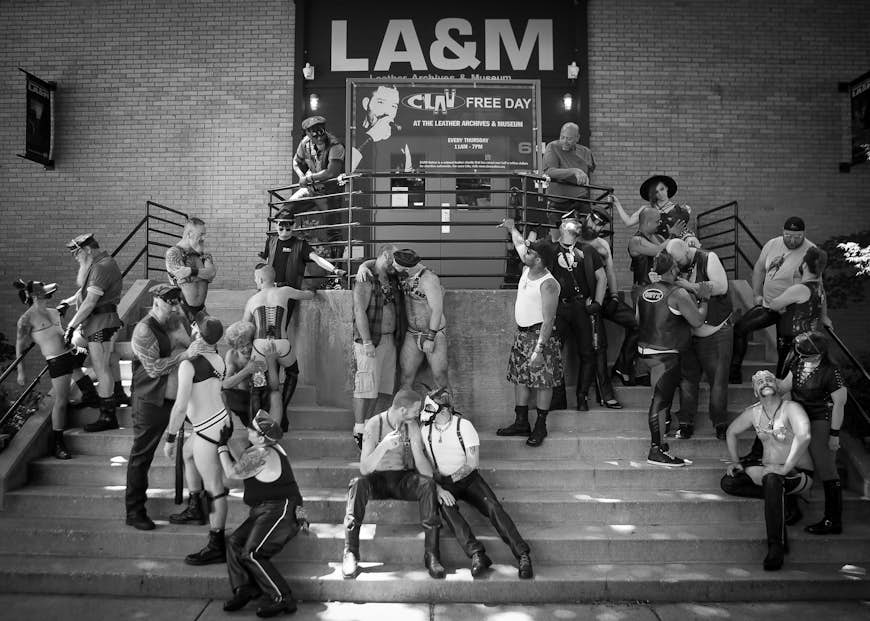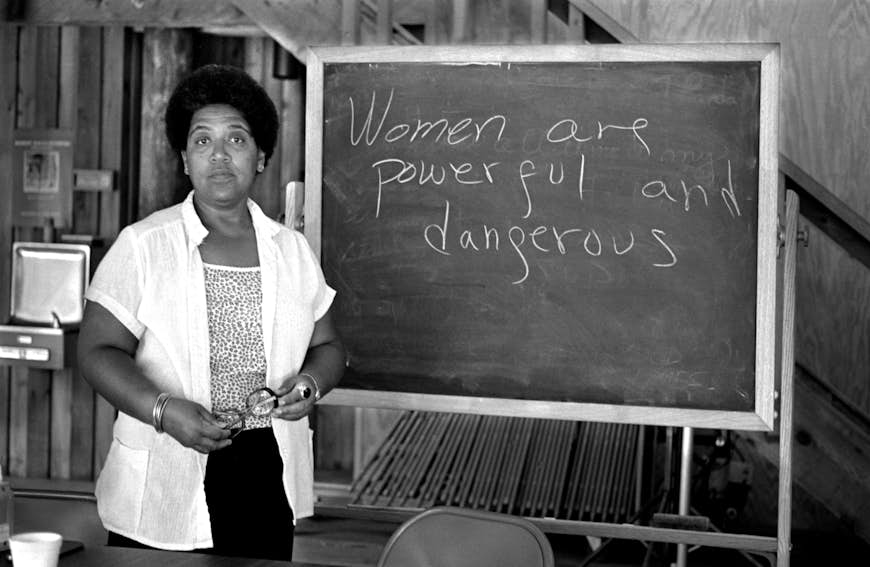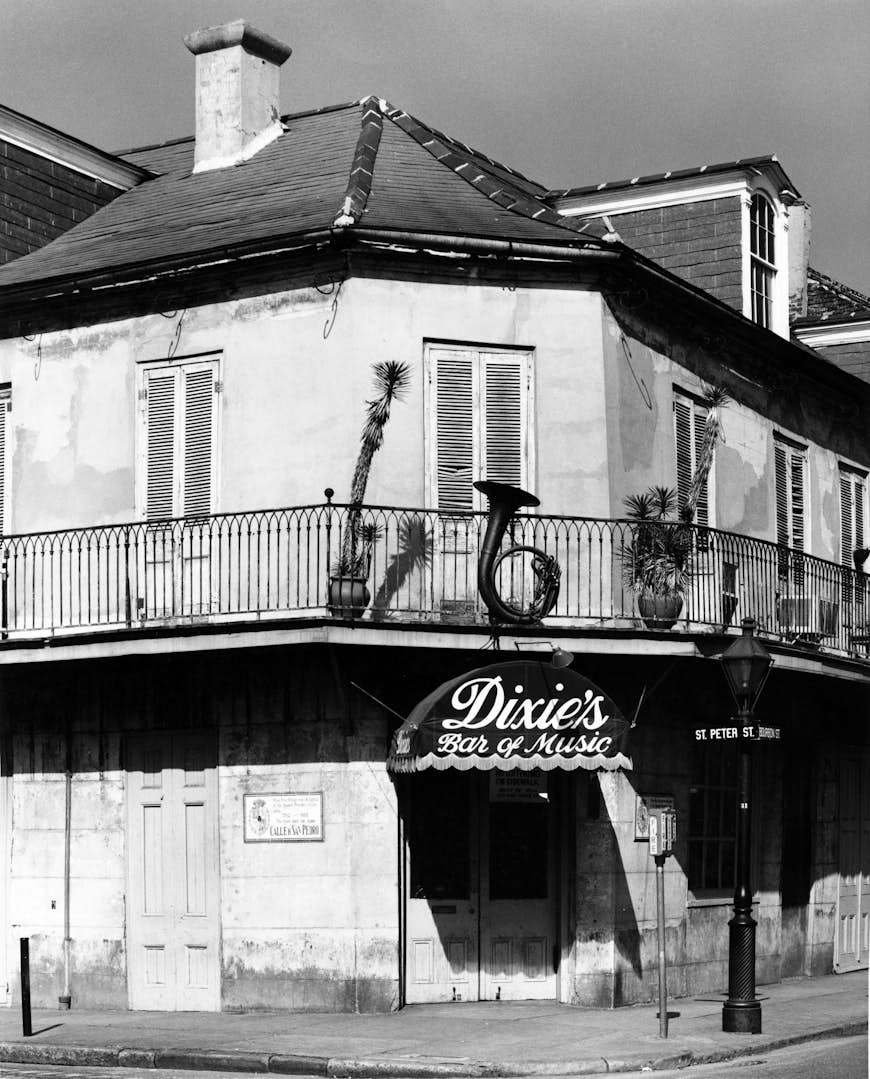Whether you’re celebrating Pride Month, Transgender Day of Visibility or simply want to learn more about LGBTIQ+ history any day of the year, you might be wondering where to start.
While some sites, such as the Stonewall Inn, are widely known for their significance to the queer community, there are many other places across the country that have also contributed to queer history in a big way.
If you’re looking to learn more about the history of the LGBTIQ+ community in the US, start with these seven sites from coast to coast. You’ll get fresh insight into who the main players in the queer liberation movement were, when key events happened, and where it all went down.
Dixie’s Bar of Music in New Orleans
New Orleans had a thriving queer community in the 1950s and 60s, and Dixie’s Bar was considered one of the prime spots to party. As one of the first gay bars in New Orleans, Dixie’s was famous for drawing in artists and writers from across the country such as Tennessee Williams, Truman Capote, and Gore Vidal as regular patrons. Although the police never raided Dixie’s directly, legend has it that when the city’s first gay Carnival ball was raided in 1962, Miss Dixie herself grabbed all the cash out of the register and bailed everyone out of jail.
The bar not only holds significance for welcoming NOLA’s gay community but was also a place where artists could mingle as musicians played live music. The bar’s historic 29-ft-long painting, which caricatured more than 60 famous musicians from the 1940s, was damaged during Hurricane Katrina. But in 2018, a restored Dixie’s mural was unveiled for the first time at the New Orleans Jazz Museum.
The 12 most LGBTIQ+ friendly places on Earth: where to go for Pride 2022
Dr Franklin E Kameny Residence in Washington, D.C.
Dr Franklin E Kameny was a landmark figure in achieving gay civil rights in both the government and medical establishment. In 1961, Kameny and his allies pressured the US Civil Service Commission to abandon its policy of denying gay people federal employment and security clearance. Kameny also led efforts to remove homosexuality as a basis for denying government security clearances and played a leading role in attacking the American Psychiatric Association’s (APA) definition of homosexuality as a mental illness. In 2011, his home was recognized as a historical residence in Washington, DC and remains a significant attraction in the city for those curious to learn more about LGBTIQ+ civil rights.
Where to celebrate Pride in the US

Leather Archives and Museum in Chicago
In 1991, Chuck Renslow, an openly gay businessman known for pioneering homoerotic photography in the mid-20th century, opened the Leather Archives and Museum in Chicago to preserve leather, kink, fetish, and BDSM history and culture, particularly in the queer community.
The Museum is home to many queer-friendly exhibitions such as The Leatherbar, which captures the history of these spaces – often viewed by gay men as centers of masculinity and an entryway into the leather community – and A Room Of Her Own, an exhibit displaying the history of women’s use of leather in their sexuality. The museum also holds the archives of Mineshaft, a historic members-only BDSM gay leather bar and sex club formerly located in the Meatpacking District in Manhattan.
Explore Chicago like a local: here are the 10 best things to do
Most Holy Redeemer Catholic Church in San Francisco
During the HIV/AIDS crisis, this San Francisco parish extended open arms to the LGBTIQ+ community, offering weekly support groups and sermons throughout the 1980s specifically for queer people. Today, the church is a regularly visited historical site and still remains a popular place of worship for those looking for inclusion.
South America’s 4 most LGBTIQ+friendly cities for Pride celebrations

Jacob Riis Park in New York City
Jacob Riis Park, aka Riis Beach, or Riis – as it’s known by locals – is a queer-friendly spot that has been popular since the 1940s. Located on a mile-long section of Rockaway Peninsula in Queens, Riis has for decades been where gay people from New York City went to sunbathe nude, as they were often excluded from other more central or crowded beach areas. Today, this area of the beach maintains its queer identity as one of NYC’s popular and diverse LGBTIQ+ public spaces and is a particularly popular go-to during the summers and over Pride weekend.
What you should know before traveling to New York City

Audre Lorde’s Residence in New York City
Prolific Black lesbian writer and scholar Audre Lorde’s house in Staten Island is a regularly visited sight for those who want to learn more about LGBTIQ+ culture. While living at this house from 1972 to 1987 with her partner and two children, Lorde authored numerous influential books including Sister Outsider and Zami: A New Spelling of My Name, co-founded Kitchen Table: Women of Color Press, and spoke at the 1979 National March on Washington for Lesbian and Gay Rights.
In 1994, two years after Lorde’s death, QTPOC (Queer and Trans People of Color) scholars and organizers built The Audre Lorde Project to honor Lorde’s legacy of speaking out for oppressed and marginalized groups. In 2019, an “Audre Lorde Way” street sign was installed at the corner of St Paul’s Avenue and Victory Boulevard, near Lorde’s former home.
How Black LGBTQIA+ travelers navigate a challenging world

GLBT History Museum in San Francisco
Considered by many to be San Francisco’s “queer Smithsonian,” the GLBT History Museum maintains an extensive archival collection of materials relating to queer history in the US, with a focus on the LGBTIQ+ communities of San Francisco and Northern California. The museum in the Castro district showcases the extensive history of LGBTIQ+ life in the city from the 1850s to the present.
Top 10 gay wedding destinations
